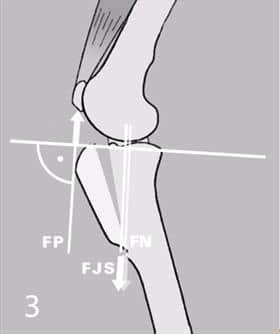Origin
Tuberosity Tibial Advancement (TTA) is a procedure that was developed in Zurich, Switzerland in the early 2000s (Source 1). The biomechanics behind the success of this procedure in correcting knees with cranial cruciate ligament defects is a change in the patellar tendon angle that effectively neutralizes the tibiofemoral shear (tibial thrust) that occurs during weight-bearing.
Theory of TTA – surgical method

The advantage of TTA is a much less invasive osteotomy and the fact that the axis of the tibia on which the weight rests is not affected. The procedure involves a cranial tibial crest osteotomy, advancing the tibial crest with an advancement cage (which serves as a stabilizing wedge ), and internally fixing the ridge with a thin tension band plate secured with bone screws (Figure). To determine the appropriate cage and plate size, measurements are taken preoperatively using x-rays of the lateral knee joint (with joint extension).
Process of the TPLO operation
The process before, during and after the TTA operation is essentially identical to that of the TPLO operation .
Duration of healing process TTA
In our experience, the patient's experience in the immediate postoperative period appears to be better than other active and passive stabilization techniques such as TPLO and extracapsular lateral suture implantation. Dogs seem to feel more comfortable in the first postoperative days, as evidenced by their ability to bear weight right from the start. This may also be because we only consider this surgical method to be useful for a relatively small group of dogs - these are mainly very small and therefore light breeds such as Chihuahuas.
Based on our experience and an indirect comparison of published results, the long-term outcome of the TPLO method appears to be similar. The patients quickly regain their resilience and quickly regain muscle mass.
Possible complications of TTA
Implant complications are rare, likely due to the less invasive procedure.
Serious complications include: postoperative patellar luxation, tibial fracture, implant loosening due to more screw placement than TPLO, and meniscal injury (if no initial meniscectomy/meniscal decompression was performed).
Minor complications include: infection/inflammation of the incision, seroma and wound dehiscence.
TTA operation in video
credentials
1 PM Montavon, DM Damur, S Tepic. Advancement of the tibial tuberosity for the treatment of cranial cruciate deficient canine stylus. Proceedings of the 1st World Orthopedic Veterinary Congress ; Munich Germany, September 2002, p. 152.
